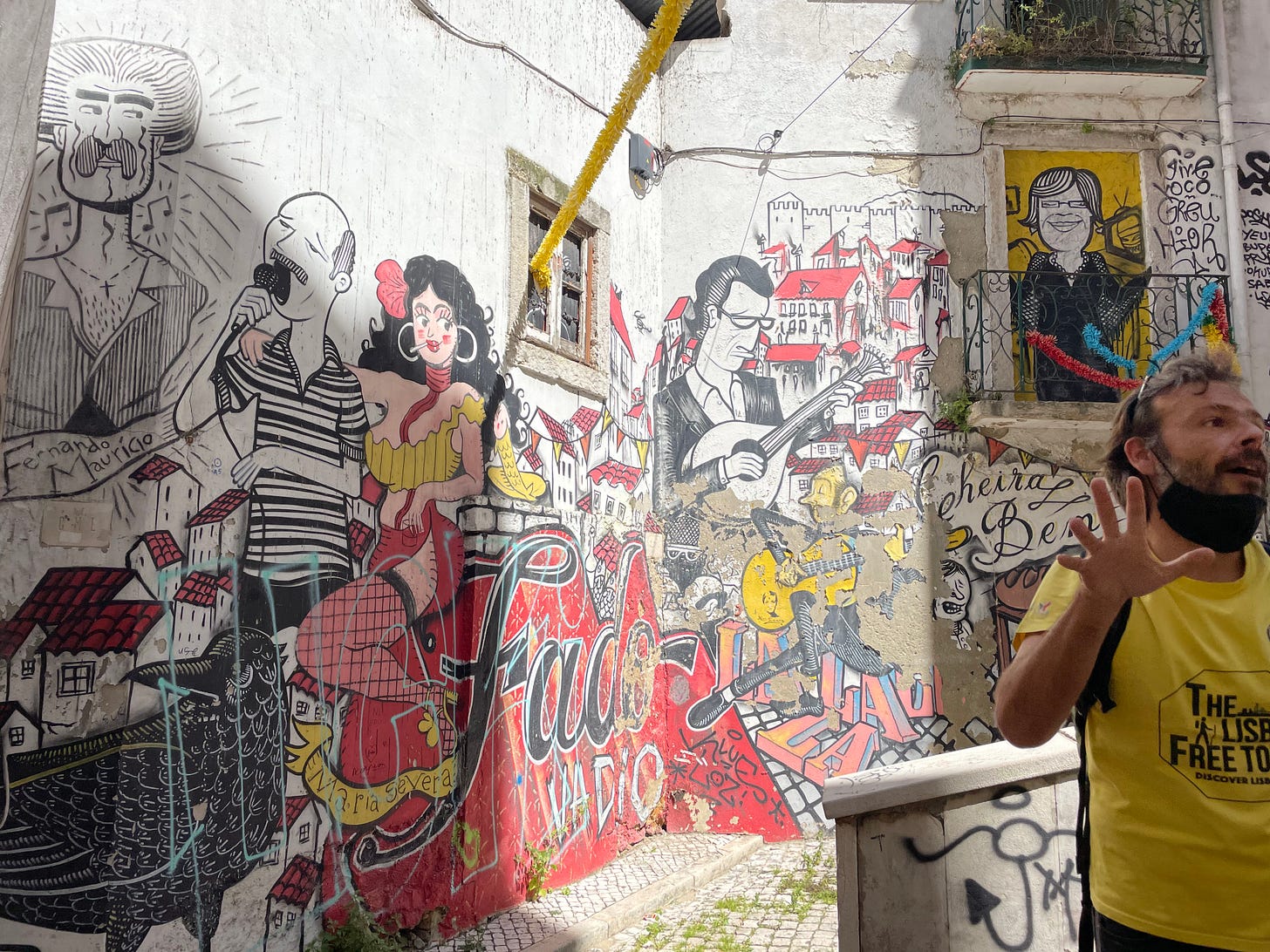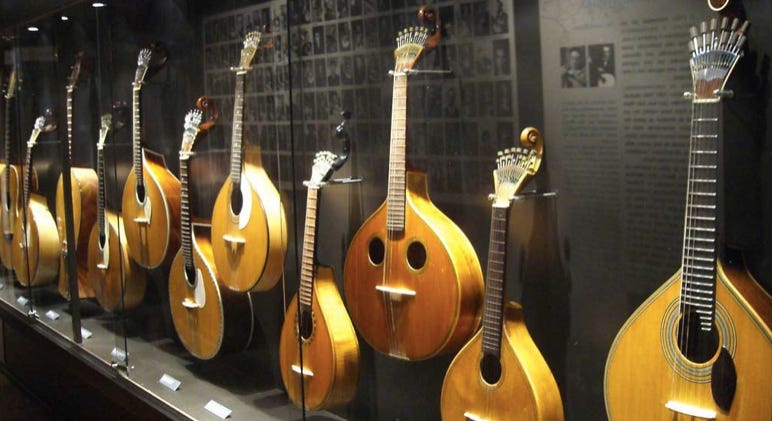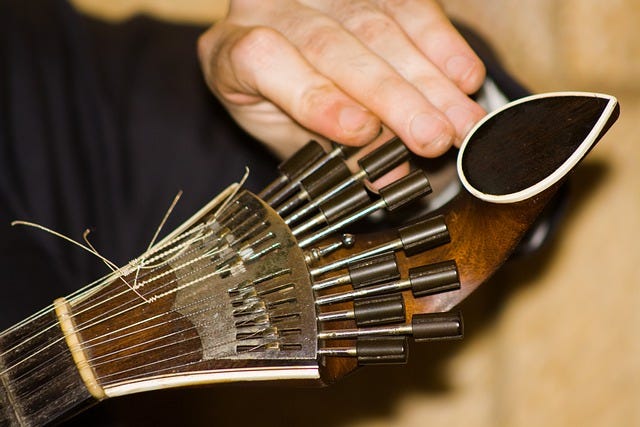I introduced you yesterday to the free walking tour of Alfama we took last week. Early in the tour, we stopped at a spot that memorialized the rich history of fado music.

Fado Streetart
The mural illustrates the hills of Alfama, the oldest section of Lisbon and the birthplace of fado. The sailors (the man in the striped shirt) sought female companionship in brothels that often played fado music. The fado guitarist and more traditional classical or Spanish guitar that accompany this form of music. That the music often moved to the streets, where young and old listened from their windows.
I first learned of fado a few months before we came to Portugal. During the pandemic, I needed a home-bound hobby. There was only so much painting and home repair one could do. So I bought a nylon-stringed guitar as I had studied classical guitar as a child. (I was first forced to play my brother’s violin for one year. I had to show I would be dedicated to it before my parents would buy the instrument I was begging for.) Anyway, I actually studied classical guitar for many years. But after college, I gave away my guitar to a nephew. (Big mistake, that Hofner guitar is worth a lot of money today.) Now when I look at the music I once was able to play, I see just lots of dots and lines on a page. But slowly, I have begun to play again. And as we planned our trip to Portugal I began to learn a few fado songs.
Fado Guitars
To be clear, I did NOT try to learn to play the fado guitar pictured above. It is a twelve-string instrument and unlike the typical twelve-string guitar the higher octave string is above its partner string not below it. It is played with picks that are attached to all your fingertips. The fado guitar carries the tune, while the classical guitar provides background and bass. To hear a sample of fado music, watch the Youtube video at the bottom of this post.
Saudade
The Portuguese have the word saudade which means longing, or nostalgia, or a feeling of loss. Fado is the music of saudade. They are often mournful ballads that speak of life at sea or of the poor. Many of the lyrics are infused with resignation, fate, and melancholy.
Dating back to the early 1800s, the word fado may come from the Latin word fatum meaning fate or destiny. As to its roots…no one is 100% certain because its history and many lyrics were passed verbally. Some point to Moorish influences, others to African slaves while at sea. But clearly, fado is the music of Portugal’s urban, working-class people who sang in the streets.
Fado Museum
We ended our free walking tour around 1330 and had a fabulous, and incredibly inexpensive lunch at a tiny place Nuno recommended. It happened to be across the street from the Fado Museum which Denise and I then visited. We only spent about 90 minutes in the museum, though if you are a fado enthusiast you would likely spend much more time. The museum includes murals of many famous artists and free audio handsets allow you to key in a numeric code to learn more about each performer. There is a listening room with headsets and a movie in which performers attempt to explain fado. Some offer explanations, while others say it cannot be explained in words but can only be felt. To me, that is why fado is Portuguese blues.







We love Fado and it is differently played in North and South. We go to a wonderful Fado cafe in Lagos in the Algarve over the last few years, i’ll see if I can send photos
I started playing the piano again we should play a duet